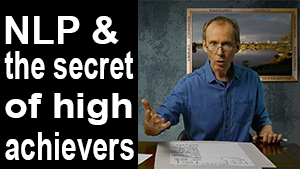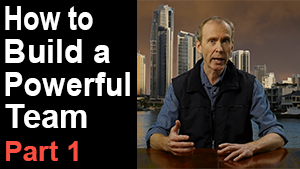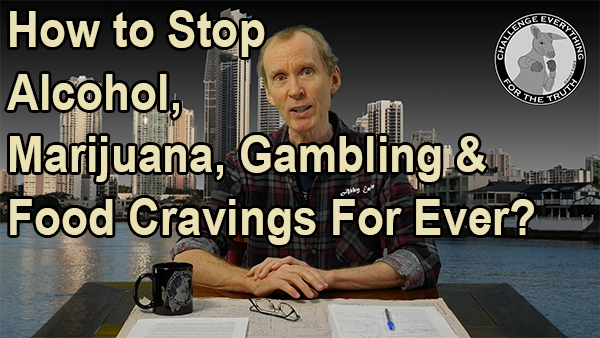
Use NLP submodalities belief change. Is it possible to quit drinking on your own? Quit marijuana hypnosis. How to stop smoking weed forever? How to stop drinking alcohol - beer, wine and spirits for ever? How to stop yourself from gambling. How to stop online gambling. Phone 07 5562 5718 or send Abby an email to book a free 20 minute telephone or Skype session.. NLP, Hypnotherapy and Medtation, Gold Coast, Robina.
Articles in the Reminiscing NLP Series: #1 Meditation, #2 Psychic Skills, #3 Ideomotor Skills. #4 Submodalities, #5
How to Stop Alcohol, Marijuana, Gambling & Food Cravings For Ever?
Reminiscing NLP #4 By Abby Eagle (2019)
Click the Image to Watch on YouTube
This article is the fourth in a series of my exploration into NLP, Hypnotherapy and Meditation starting back in the 1980's.. In this article the focus is on submodalities and hypnosis in helping people to beat their addictions to cigarettes, marijuana, alcohol, junk food and gambling.
Submodalities
Richard Bandler was very much into shifting submodalities to bring about rapid change. So what are submodalities? As you know we have five representational systems – VAKOG. In each of those representational systems there are sub-distinctions known as submodalities. So in the visual system an image in mind may be a still or a movie – it may be in colour or black and white – it may be small or big – close or far away – in front, to the side or behind.
In the auditory system there will be sounds of some type, a voice or voices – the sound will have volume, tonality and tempo, pauses, accents, etc. The sound may be close or far away.
In the kinaesthetic system there will be body sensations. The sensations will be in a location – they may be warm or cold, big or small, still or moving, tense or relaxed, there may be one or a number of them, and so on.
So Richard Bandler had a procedure for changing beliefs where you elicit the submodalities for a negative belief, a weak belief - something that is neither here nor there, and a strong positive belief. The task was to shift the unwanted negative belief into the smd’s of something that is neither here nor there – and shift the new belief into the smd’s of a strong belief.
So in working with cigarette smokers what I did for a while was to elicit the submodalities for the belief that it was difficult to stop smoking and shift that into the submodalities of something easy to stop – so then they at least had the belief that smoking was easy to stop. But I don’t do that anymore. I have much better ways to help addicts build the belief that they have what it takes to change their bad habits. But more about that later. Anyway I spent a lot of time eliciting submodalities with my clientele – I learned a lot that way and you can too.
There is one submodality change which I used a lot and still do when I need it. It is useful when helping people overcome addictions, bad habits and thoughts that they want to get out of mind. This is how it goes. Let’s say the client wants to overcome an addiction for alcohol.
You start by eliciting something that you used to do but no longer do. Let’s say you used to eat Wheat-Bix but no longer do – you have no interest in that food at all. And let’s say the presenting problem is that the person drinks too much alcohol. So what you do is to elicit the submodalities of Wheat-Bix – and then you elicit the submodalities of whatever alcoholic beverage they drink. This is called a contrastive analysis. Then you shift the submodalities of alcohol into the smd’s of Wheat-Bix. When you ask the client to show you the location for the submodalities of the alcohol it should now be in the location of the Wheat-Bix – and no longer be of interest to them. However a little disclaimer here – there is much more to engineering rapid long term change to quit drinking alcohol that just shifting submodality distinctions. Shifting submodalities is just part of the change process.
And before I forget I should say something about kinaesthetic anchoring. Richard Bandler had a two tape video of a workshop that was held in Brisbane, just north of the Gold Coast in Queensland, Australia. Terry McClendon brought Richard over in 1989 or thereabouts. I watched that video so many times that I degraded the tape. I think it was called Magic In Action.
Anyway, anchoring – stimulus response conditioning – it’s where you form an association between two or more things. So you know the coca cola advert? They show these beautiful healthy young people having a great time. The advertiser hopes that this will elicit within the viewer a good feeling and a state of desire – then they quickly flash an image of the coke bottle on the screen. Thereafter when you see a bottle of coke the advertiser hopes that it will elicit the feeling and imagery that you had when you watched the advert. So in effect all advertising is just hypnosis.
So let’s say the client wants to overcome anxiety and have a feeling of relaxed confidence when they talk before a group of people – then one of the things that you could do is to have the client remember a time when they felt relaxed. You then reach over and touch them on the wrist. You then have the client amplify the feeling as you slide your hand up their forearm – this is called a sliding anchor. While holding the anchor you then future pace (a mental rehearsal) and have the client see themselves being relaxed while talking to a group of people. You then repeat the process with a feeling of confidence and then associate that with the future event.
What I would do back in the nineties was to check the submodalities of the present state, and the submodalities of the resource states of relaxation and confidence – then I would do the anchoring process – and then out of interest check the submodalities of the present state to see how it had changed. I did this with a lot of NLP techniques and it helped give me an understanding of which NLP techniques and procedures were most effective. And when you get good at calibrating to the positive changes that the client is making you can make an informed decision, so to speak, as to what series of techniques will get the client the outcome that they desire.
What I should mention here is that you need to carefully sequence your techniques within suitable preframes and end frames if you want to get rapid long lasting change. A single NLP technique by itself does not usually get long term results – it is how you sequence the technique within appropriate frames of mind that gets the result. The same goes for great artists – they have to bring a lot of skills together in the right sequence to create a masterpiece.
Experimentation
When I was confident that I could get an outcome by using a particular NLP technique then I would try another NLP technique and check the submodalities to see which was most effective. I have to really stretch my memory here to remember what I used to do. Okay, so let’s say the presenting problem was anxiety about flying on a plane. So what I did was to set up a test on a scale of zero to ten for anxiety – so when you think of catching a plane – imagine that you are strapped in your seat on the airplane as it begins to taxi down the runaway – on a scale of zero to ten what is the degree of anxiety. So you make a note of that value. You can also elicit the submodalities for the state.
Then I might have the client change the submodalities of past memories of having flown from colour to black and white and then test the degree of anxiety.
Or I might have them take the image of the future event and change the submodalities in some way – like changing the image to black and white and progressively moving it out over the horizon –and then test the degree of anxiety.
Or I might use pseudo orientation in time and have the client imagine that it is some hours after the plane has safely touched down at their destination – and then test the degree of anxiety. This is a good procedure.
Or I might use the Timeline technique and clear fear from the past – and then test the degree of anxiety – and then check the submodalities.
Or use the Drop Through procedure and then test the degree of anxiety.
So in some way or another you need to be able to calibrate to the client’s state of mind. You can get an idea of the change in submodalities from their visual gestures – the words used – and their tonality. So you have to track your client through the entire session.
In this way I was able to learn which techniques were the most effective and which techniques could be combined together to achieve the most robust change.
Be a Learning Machine.
Richard Bandler talked about being a ‘learning machine’. What I got from that was the importance to stay open to information and withhold making judgements. For example, you get NLP’ers who poo pah hypnosis and you get hypnotists who poo pah NLP – and then you get the psychologists who poo pah everyone who is not mainstream psychology or part of the medical profession.
Anyway I stayed out of all of that and still do and instead look for what people have to offer. By the way – and this is an aside – I have come across a number of NLP trainers who say that the Myers Briggs personality typing has been disproven and is therefor a waste of time. I look at those guys and think to myself, how can you be so closed minded. I have learned a lot from studying a wide range of personality typing tools – to me it is about usefulness – that is another attitude that I got from Richard Bandler. If it is useful then keep on using it – it does not have to be proven to be true by some professor – if it works for me then that is all that matters.
So there was an Australian Hypnotist – I forget his name - he lived in South Africa and delivered a workshop in Sydney one year. He poo pahed NLP and yet in one of his demonstrations he had the client progressively shift an image out to the horizon – a clear example of shifting submodalities. He did it really well – so I combined that with Richard Bandler’s wish-whoosh in shifting submodalities. Now as you would know – NLP is a modelling methodology – so use it at every opportunity to model out the bits that work and then put them into your change work. That is what I did and I created a session outline that gets people off of cigarettes, marijuana, alcohol, gambling, binge eating, junk food, etc in a matter of hours – I am not talking about intensive rehab retreats and years of therapy and attending support groups – I am talking about hours – sometimes as little as three to four hours – on occasions in less than half an hour.
For example, one afternoon I had the opportunity to give a demonstration to a group of people. There were about ten people. They all sat around a large dining table. I sat at the head of the table and had them all go into peripheral sensing – then I asked for ideomotor signals – a signal for a ‘yes’ and a signal for a ‘no’. Then in peripheral vision I looked for those people who gave clear ‘yes’ and ‘no’ signals. That is actually quite a job. I chose one woman to work with. She was overweight and expressed an interest to banish sweet foods from her life. So I spent about ten minutes working with this woman. And that was it. For the next couple of hours we continued our networking meeting. Afterwards she told me that normally she would have snacked all afternoon but after my session with her she had no interest in snacking even though foods were presented in a buffet on the table and most of the other participants were eating.
I became friends with her and her husband and dropped by once every couple of weeks to say hello. The day after the demonstration she said she got the thought to cook a roast lamb dinner – something she had not done in years – in actual fact she was virtually a vegetarian. Now, I never mentioned anything about eating meat – what happened was that once the cravings for sweet foods had disappeared her unconscious mind presented her with thoughts of foods that would be healthful for her. Over the next six months she lost a stack of weight and so did her husband – and I am sure her son benefited as well. And this was all from an introductory talk and a session that lasted about 30 minutes. Not bad heh?
Anyway I don’t know if you have any clinical experience but typically people will seek help from the medical profession first – I have had clients tell me that they spent 10-15 years in and out of rehab for eating disorders and alcohol abuse – I know of others who have spent decades attending AA meetings.
And then finally out of desperation they reach out to an NLP Master Practitioner or Hypnotherapist as a last resort and expect a one session cure. So out of necessity I learned how to do what was most important for the client to get their outcome in a short period of time.
The Alcoholic Who Reorganised Her Memories.
What is most important is to try and map out the structure for the clients presenting problem. There was one alcoholic woman in her forties. She had spent years in and out of rehab – anyway she comes to see me – I spent half an hour gathering information and building a well formed outcome. I asker her what negative emotions if any, were a problem for her. She replies, “anger”. So I Time-Lined the anger. The first significant memory she had where there was anger was at a time when she was about three and a half and was sexually abused in the garden. So I invited her unconscious mind to preserve the positive learnings and generate a new understanding. And then the anger disappeared. I got her to update the past and take the learnings into the future and then I brought her back to now and she sat there for about five minutes deep in thought. She told me that she experienced a total reorganisation of her memories and that now she had no desire to drink at all. And then she told me that previously when she thought of the three and half year old memory she saw a little girl hiding in the garden traumatised by the sexual abuse – but now she saw a little girl running around, laughing with the other kids and enjoying herself. And I have seen this happen countless times where once the past is healed the memories become positive – it is very interesting.
The Alcoholic Who Hid Wine in the Bushes.
And then there was another alcoholic woman in her forties – and I need to make a distinction here – you get the people who drink way too much – the people who drink a six pack of beer every day after work – I don’t consider them to be alcoholic. To me an alcoholic is someone who may drink at any time of the day or night and will go to extremes to hide their behaviour.
Anyway this woman comes to see me with her husband. She would hide wine bottles in the garden and in various places around the house. She told her husband that she had stopped drinking and yet she would still get drunk so her husband brought her to see me.
She looked tense and ten minutes into the session to make things easier for myself I thought I would start with a deep trance induction to help her to relax. So I used a Dave Elman style deep trance induction and then I invited her to come back into the room and open her eyes but she was so relaxed she could hardly move. This can happen if the person is very tense – when they relax the unconscious mind utilises the experience and wants to keep them that way for a while.
So she had opened her eyes and yet plainly she was still in a deep trance – and she had no idea that she was in a trance – the only thing she was aware of is that when she tried to lift her hands and arms that they would flop back down. I guess that I could have asked her to close her eyes and rest but her husband was sitting there – and I had spent very little time doing preframes and explaining how I intended to run the session – so I found myself trying to make small talk and keep both of them superficially occupied. Anyway after about half an hour I was able to get back into the session and do what needed to be done.
I saw her a week later – and it turned out that she had not had one drink in that entire time. So I spent the second session making sure that what needed to be done was completed – and that was all it took to help this woman beat her alcohol addiction.
The Marijuana Client
And then there was this guy who wanted to stop smoking marijuana. I think he was a chef. Chef’s tend to be SP’s that is sensory perceivers – I think you will find that the best action sports athletes and any activity that requires the person to be totally present in the moment are SP’s. Hairdressers, chefs, Navy Seals, sky divers, etc all need to be in the present moment to do their best job and stay alive.
So this guy wants me to help him quit smoking marijuana. I begin my usual routine which is quite structured and then he says, “Can’t you just do the hypnosis thing?” So I say to myself, “Jeez”, and then on me being thrown into the present moment myself I say, okay close your eyes – and then I run Dave Elmans deep trance procedure. You know the one? Close your eyes and relax the muscles around the eyes, keep on relaxing the muscles around the eyes until no longer work and when you are sure that the eyes no longer work I want you to try and open your eyes and discover that you can not.
So I put him into a deep trance and as I do so I am double tracking and thinking of what to do next. So I get him to think back to a time when he was a child and he was being playful. He didn’t know that he was being playful at the time – but as children do when they are presented with a problem they will playfully work with it until they find a solution. So I have him access this state, amplify it and then put it in all those situations where it would be useful – and so on. And then I do some other stuff like saying that marijuana is now a thing of the past – and that from now in certain situations he would naturally reach into the inner source of confidence, love and playfulness and have those feelings be present for him. Anyway so I run this with him for half and hour – bring him out of the trance – do some end frames and that is the end of the session. A couple of days later he gives me a call to tell me that he had stopped smoking marijuana totally and he says, “And if you only knew how much I smoked?” So he was really impressed with the rapid change that he got. I don’t like doing sessions like that because I can’t calibrate to the changes in the way that I can with my other procedures. Anyway it is good to have flexibility to work with different personality types.
And so from that session I wrote up some scripts and recorded them – and put them in the shopping cart on my website. There are scripts to banish cigarettes, marijuana, gambling, chocolate, sweet foods and over eating. It was a lot of work. Anyway one guy in Sydney listened to the stop marijuana script once and stopped smoking – then he bought the stop smoking cigarettes and listened to that once and stopped. He was so impressed that he enrolled in a hypnosis training in Sydney. The testimonial is on my website.
But I found it really challenging to market and sell the mp3’s. And yet on Amazon I have seen people successfully selling their quit smoking mp3’s – where the suggestion is to listen to the script 5-6 times a day for a month. So if you would like to team up with me to market my mp3’s send me an email.
Please leave your comments below and if you have not done so you are welcome to join us over at the NLP Hypnotherapy Facebook Group for a discussion.
If you are looking for a NLP Coach then feel free to contact myself – Abby Eagle using the contact form - top right of this page.
Share With Friends
| DISCUSSION GROUPS | |
|---|---|
 |
|
| NLP Future Selfing | |
| NLP, Hypnotherapy & Meditation | |
| NLP Peace Mapping | |
| Facebook Discussion Group | |
| The secret of high achievers |
|---|
 |
| How to build a powerful team |
 |
| Learn the NLP Meta Model |
 |
| How I stopped drinking alcohol. |
 |
| How to coach yourself using NLP. |
 |




